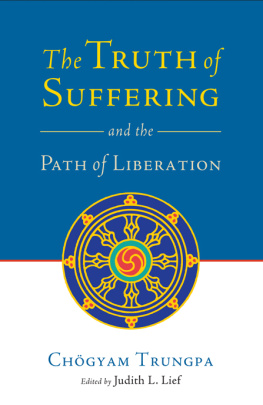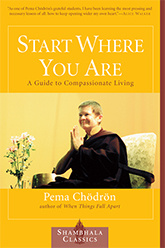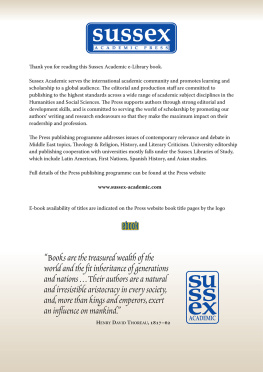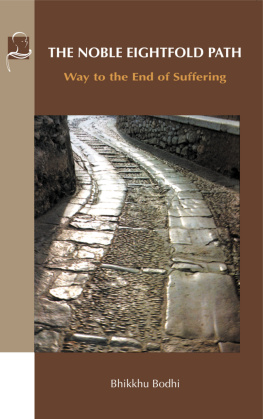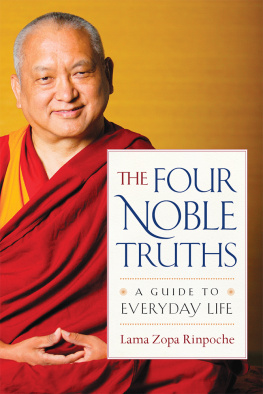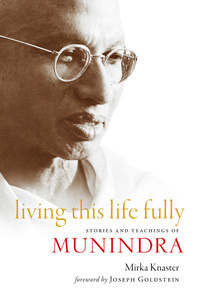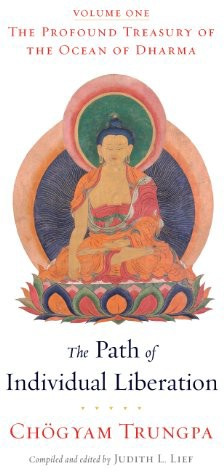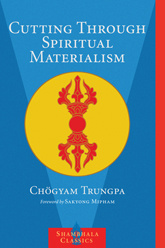This wonderful book presents the Four Noble Truths of Buddhism in a way that is completely fresh and original while at the same time never losing contact with the traditional sources.
Pema Chdrn
An invaluable resource for anyone seeking the truth. With disarming honesty and humor, Trungpa Rinpoche guides us through the Buddhas teachings, bringing us face to face with our many misconceptions and our true potential.
Sharon Salzberg
Trungpa Rinpoches mastery of the dharma reveals within this apparently simple teaching a ceaseless profundity of inestimable value for both beginners and advanced practitioners.
John Daido Loori
In this book we can hear Rinpoches uncontrived, genuine voice illuminating the fundamental teachings of Buddhism on the cycle of suffering and freedom from sufferingprofoundly inspiring all of us.
Tulku Thondup Rinpoche
ABOUT THE BOOK
Chgyam Trungpas in-depth exploration of the Four Noble Truthsthe foundational Buddhist teaching about the origin of suffering and its cessationemphasizes their profound relevance not just as an inspiration when we set out on the path, but at every other moment of our lives as well, showing how we can join view (intellectual understanding) of the teaching with practical application in order to interrupt suffering before it arises.
CHGYAM TRUNGPA (19401987)meditation master, teacher, and artistfounded Naropa University in Boulder, Colorado, the first Buddhist-inspired university in North America; the Shambhala Training program; and an international association of meditation centers known as Shambhala International. He is the author of numerous books including Shambhala: The Sacred Path of the Warrior, Cutting Through Spiritual Materialism, and The Myth of Freedom.
Sign up to receive inspirational quotes by Chgyam Trungpa and special offers from Shambhala Publications.

Or visit us online to sign up at shambhala.com/eoceanofdharma.
The Truth of Suffering
and the
Path of Liberation
CHGYAM TRUNGPA
Compiled and edited by Judith L. Lief

SHAMBHALA
BOSTON & LONDON
2010
Shambhala Publications, Inc.
Horticultural Hall
300 Massachusetts Avenue
Boston, Massachusetts 02115
www.shambhala.com
2009 by Diana J. Mukpo Published in association with Vajradhatu Publications All rights reserved. No part of this book may be reproduced in any form or by any means, electronic or mechanical, including photocopying, recording, or by any information storage and retrieval system, without permission in writing from the publisher.
Library of Congress Cataloging-in-Publication Data
Trungpa, Chgyam, 19391987.
The truth of suffering and the path of liberation / Chgyam Trungpa; edited by Judith L. Lief.
p. cm.
Includes bibliographical references and index.
eISBN 978-0-8348-2121-7
ISBN 978-1-59030-668-0
1. Four Noble Truths. 2. SufferingReligious aspectsBuddhism. 3. BuddhismDoctrines. I. Lief, Judith L. II. Title.
BQ4230.T78 2009
294.342DC22
2008037825
CONTENTS
EDITORS PREFACE
I N THIS BOOK, Chgyam Trungpa discusses the Buddhist teachings on the four noble truths with great clarity and insight. He takes these seemingly simple teachings and systematically uncovers many layers of subtlety and sophistication. His presentation skillfully weaves together a scholarly exposition of the material with a fresh and up-to-date interpretation geared toward the contemporary dharma practitioner. Like a great jazz musician, Trungpa focuses on a central theme, explores it in depth, and then takes off into magnificent riffs of improvisation before returning once again to core principles. As is typical of his teaching, he repeatedly connects the material he is discussing with the meditative and contemplative practices that bring such teachings to life.
Chgyam Trungpa Rinpoche (19401987) was formally trained in the Tibetan monastic tradition, as the eleventh Trungpa Tlku and abbot of Surmang Monastery in eastern Tibet. (Rinpoche is a Tibetan honorific meaning Precious One or Precious Jewel. The term tlku indicates a person who is considered to be a reincarnation or spiritual heir of a specific teacher.) Like many other Tibetans, he fled his country after the Communist takeover and entered India as a refugee. From India, he traveled to Great Britain, where he studied Western arts and culture at Oxford University, before moving to North America in 1970. Trungpa Rinpoche was one of the first Tibetan lamas to arrive in the United States and Canada, and he became a pivotal figure in introducing Tibetan Buddhism to Western students.
Chgyam Trungpa Rinpoche was an innovative spiritual leader, continually experimenting with new forms of transmitting the dharma that would allow it to take root in modern Western society not as an alien or exotic novelty but as a genuine living tradition. He did not fall back on familiar pedagogical approaches more suited for Tibetan monastics, nor did he present the dharma in the dry language of the academy. Instead he brought the teachings to life, speaking directly with no exoticism or cultural trappingsand in English! This was a radical and controversial approach.
Trungpa Rinpoche had an uncanny ability to communicate in a way that each student thought he was talking directly to him or her alone. He was able to connect the teachings with the day-to-day experiences of ordinary people, and show a way for lay-people to join their lives with practice and study as householder yogis. At the same time, his exposition was true to the depth and profundity of his tradition. Although he taught in the West for only seventeen years (from 1970 to 1987), his influence has been immense and continues to unfold.
The four noble truths are central to the Buddhist tradition. The Buddha presented these core teachings in one of the first sermons he gave after his enlightenment, and they were recorded in the sutra entitled The First Turning of the Wheel of Dharma. (An excerpt from this sutra appears after the Editors Acknowledgments.) In later teachings the Buddha touched on the four noble truths repeatedly, expanding upon and further elucidating his original presentation. In this volume, Trungpa Rinpoche approaches the four noble truths from the practitioners perspective, joining a discussion of the view, or intellectual understanding of these teachings, with a discussion of the application, or how that view might be realized in practice.
Trungpa Rinpoche stresses the importance of recognizing how entrenched we are in habitual patterns of suffering. Although we might prefer to muse about happiness and how we can get more of it, it is our blind stumbling after happiness that has entrapped us in the first place. The first truth, the truth of suffering, lays it on the line: suffering is real, and it cannot be avoided. For the practitioner, the starting point is taking a cold, hard look at our situation, honestly and dispassionately. It is essential to break our long-standing habit of avoidance and wishful thinking.
Once we have overcome our resistance to facing the fact of suffering, we have the opportunity to examine its cause. According to the second noble truth, the cause of suffering is fundamental ignorance and desire. Trungpa Rinpoche discusses this truth in terms of subtle shifts of thought turning into fixations, then into emotions such as jealousy or hatred, and finally into actions. The value of meditation practice is that the practitioner learns to notice this pattern at an early stage, and is thus able to catch these subtle shifts of thought before they escalate into harmful actions with their inevitable repercussions.
Next page
